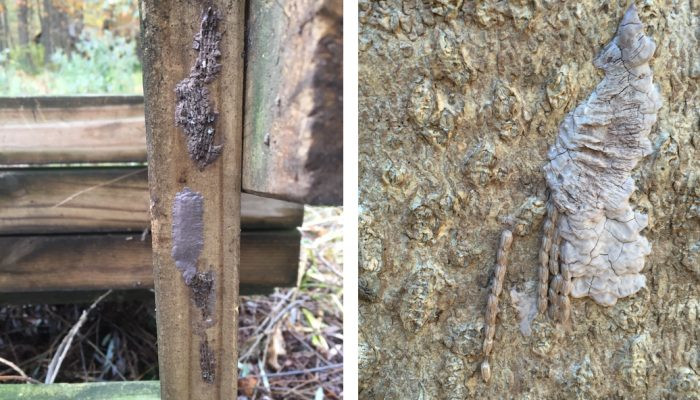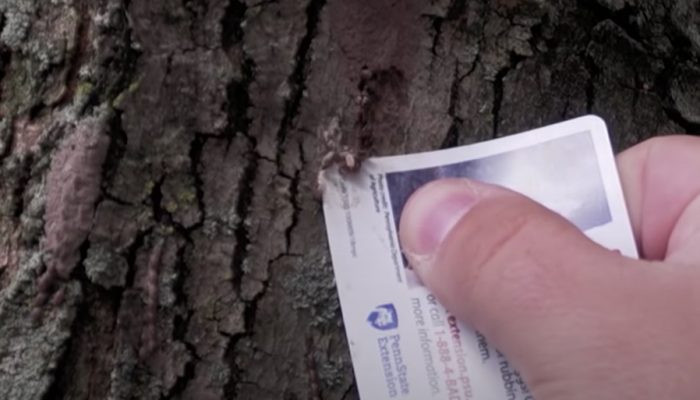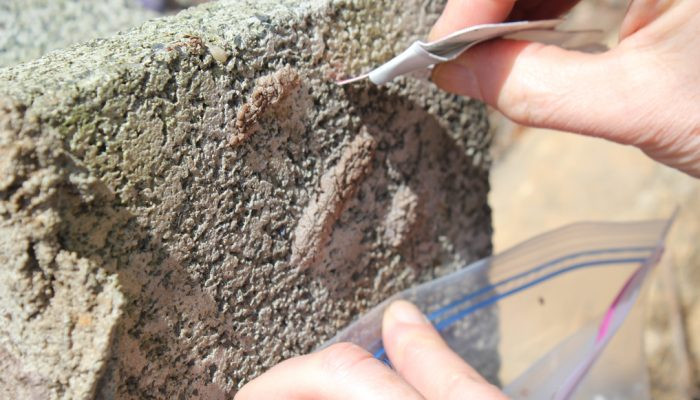The spotted lanternfly is an invasive insect that has been causing significant concern since its first appearance in certain regions. These pests pose a threat to a wide array of plants and trees, making it crucial to manage their population. Starting in the fall, spotted lanternflies begin laying their eggs, presenting a key opportunity to control their numbers for the following year. Understanding what lanternfly eggs look like, where to find them, and how to destroy them is essential in mitigating their spread and impact.
Identifying Lanternfly Egg Masses: What to Look For
Identifying spotted lanternfly eggs is the first step in controlling these pests. Here’s what to look for when searching for their egg masses:
- Size and Shape: Lanternfly egg masses are typically around an inch long and about 3/4 of an inch wide. They are not very large, but noticeable once you know what to look for.
- Initial Appearance: Freshly laid egg masses are covered with a white, waxy, mud-like substance secreted by the female lanternfly. This coating serves as a protective layer for the eggs underneath.
- Dried Appearance: Over time, this white covering dries out and hardens. Dried egg masses often resemble light grayish-brown splotches of mud, cement, or even lichen, blending in with their surroundings and making them easy to overlook.
- Egg Count: Each egg mass can contain a significant number of eggs, typically ranging from 30 to 50 individual eggs within a single mass.
 Spotted lanternfly egg mass and exposed eggs
Spotted lanternfly egg mass and exposed eggs
When and Where to Find Lanternfly Eggs
Knowing when and where to search for lanternfly eggs will greatly increase your chances of finding and destroying them.
- Timing: The best time to find spotted lanternfly egg masses is from fall through spring, specifically from September to June. This extended period is when the eggs are present before they hatch.
- Location Preferences: Lanternflies are strategic in choosing locations to lay their eggs. They seek out areas that offer protection from harsh weather conditions and predators. Common places to find egg masses include:
- Tree Trunks and Branches: Examine the bark of trees, both on the main trunk and along branches, especially on the undersides of branches which offer more shelter.
- Rocks and Stones: Check the surfaces of rocks, particularly those that are sheltered or partially covered by vegetation.
- Outdoor Structures: Look at man-made structures such as sheds, fences, and outdoor equipment. Lanternflies will lay eggs on almost any sheltered surface.
- Undersides of Surfaces: They often prefer to lay eggs on the underside of objects, providing additional protection from the elements.
 Spotted lanternfly egg mass on a bench post and close-up
Spotted lanternfly egg mass on a bench post and close-up
How to Destroy Lanternfly Eggs: Two Effective Methods
Once you have located lanternfly egg masses, it’s crucial to destroy them to reduce the population. There are two straightforward methods you can use:
Method 1: Crushing
Crushing is a simple and direct method to destroy lanternfly eggs.
- Tools: You will need a hard, flat object such as a credit card, a putty knife, or even a sturdy plastic card.
- Technique: Place the edge of your chosen tool against the egg mass and apply firm pressure. Drag or scrape the tool firmly across the surface of the egg mass.
- Confirmation: As you crush the eggs, you may hear a popping sound and see liquid released as the eggs break open. Ensure you apply enough pressure to crush all eggs within the mass.
 Crushing lanternfly egg masses with a credit card
Crushing lanternfly egg masses with a credit card
Method 2: Scraping and Disposal
Scraping eggs into a bag with alcohol or sanitizer is another effective method for destruction and containment.
- Prepare a Bag: Take a plastic bag and pour a small amount of rubbing alcohol or hand sanitizer into it – just enough to coat the eggs.
- Scrape Eggs: Use a credit card, putty knife, or butter knife to scrape the egg masses off the surface. Direct the scraped eggs to fall directly into the bag.
- Alcohol Contact: Ensure that the scraped eggs come into direct contact with the alcohol or sanitizer within the bag. The alcohol solution is crucial to kill the eggs.
- Seal and Dispose: Seal the bag securely, place it into another bag for extra precaution, and then dispose of it properly in the trash.
 Scraping egg masses into a bag with alcohol
Scraping egg masses into a bag with alcohol
While destroying spotted lanternfly eggs is a significant step in managing their population, it’s important to note that some egg masses may be out of reach or hidden. Therefore, you may still observe lanternfly nymphs and adults in the future. However, by diligently destroying every egg mass you can find, you will contribute to significantly reducing their spread and protecting your local environment. For more in-depth resources and information, you can explore the spotted lanternfly resources available at Penn State Extension.